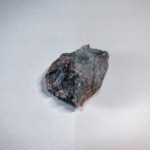Are you ready to embark on a thrilling journey through time? Get ready to uncover the secrets of Earth’s ancient inhabitants as we delve into the captivating world of fossils! In this article, we’re going to unearth fascinating facts about fossils specifically curated for KS2 learners. From mind-boggling fossil types to the incredible stories they tell about our planet’s past, prepare to be amazed and inspired by the wonders of paleontology. So buckle up, young explorers, as we set off on an adventure to unravel the mysteries of fossils!
Facts About Fossils KS2
Fossils are like puzzle pieces that help us uncover the secrets of Earth’s past. They are the preserved remains or traces of dead organisms, providing valuable evidence of how life on our planet has changed over time. Let’s dive into the captivating world of fossils and discover some fascinating facts that will make you an expert in no time!
One of the most incredible aspects of fossils is their age. They have been found in rocks dating back billions of years! These ancient relics offer us a window into the past, allowing us to explore the diverse life forms that once roamed the Earth. Without fossils, we would never have known about legendary creatures like dinosaurs.
Now, you might think that fossils are always complete skeletons or impressive fossils of entire animals, but that’s not the case. In fact, it is quite unusual to find a whole fossilized animal. Instead, fossils can be various things, such as footprints or animal burrows, providing us with hints of the creatures that once inhabited the land.
Believe it or not, there are even fossils of poop! Yes, you read that right. Fossilized feces are called coprolites. These ancient droppings may sound gross, but they are important evidence of the diets and habitats of prehistoric animals. They are like ancient time capsules filled with clues waiting to be unraveled.
Did you know that scientists have also discovered fossils of feathered dinosaurs? This astonishing find has helped us understand how some dinosaurs were more closely related to birds than to reptiles. These fossils allow us to paint a vivid picture of what these magnificent creatures actually looked like, from their scales to their feathers.
Now, not all fossils turn into the hard, preserved remains we typically imagine. Sometimes, the remains of plants and animals are preserved without turning into stone. This can happen when certain conditions, like being trapped in sticky sap or buried in sediment, prevent decay from occurring. These “soft” fossils give us valuable insights into the biodiversity and ecosystems of the past.
To truly appreciate fossils, we need to understand their significance. They are like keys that unlock the secrets of Earth’s history, revealing how life has evolved and adapted over millions of years. Fossils provide a tangible link to the past, allowing us to connect with the creatures that once called our planet home.
It’s truly fascinating how fossils can spark our imagination and curiosity. They tell us stories of ancient creatures, environments, and the wonders of evolution. By exploring fossils and contemplating their beauty and mysteries, we can cultivate a sense of wonder and discovery within ourselves. So, let’s embrace our inner paleontologist and embark on a journey through time!
As you can see, fossils are not just remnants of the past. They are windows into worlds that existed long before us. These captivating artifacts teach us about the wonders of life and the incredible forces that have shaped our planet. So, go ahead and explore the fascinating world of fossils – there’s always something incredible waiting to be uncovered.
To summarize our fossil adventure:
- Fossils are the preserved remains or traces of dead organisms.
- They provide evidence for how living things and the environment have changed over time.
- Most species found in the fossil record have become extinct.
- Fossils help us understand dinosaurs and other ancient creatures.
- Some fossils are footprints or animal burrows, rather than complete skeletons.
- Fossilized poop is called coprolites.
- Scientists have found feathers on some dinosaurs.
- Fossils can be preserved without turning into stone.
- Fossils are like keys that unlock Earth’s history.
- Exploring fossils inspires curiosity and a sense of wonder.
With these fascinating fossil facts in mind, get ready to embark on your own paleontological journey. Let’s uncover the remnants of ancient life and unlock the mysteries of our planet’s past!
Table: Fossil Types and Their Significance
| Fossil Type | Significance |
|---|---|
| Skeletons | Reveal the complete structure of ancient animals |
| Footprints | Provide evidence of ancient animal movement |
| Coprolites | Offer insights into ancient diets and habits |
| Soft Tissue | Reveal the biology and appearance of ancient life |
| Feathers | Connect dinosaurs with modern birds |
| Plant Impressions | Show the diversity of ancient flora |
Now that you’re armed with these incredible fossil facts, go out and explore the world of paleontology. There’s a whole universe waiting to be discovered, and who knows, you may even stumble upon the next groundbreaking fossil find! Happy fossil hunting!
Fossils have captivated scientists and curious minds throughout history. The secrets they hold about our planet’s past are simply awe-inspiring. If you’re eager to learn some fascinating facts about fossils, click here for an amazing journey into the ancient world: facts about fossils. You won’t believe the incredible discoveries that have been made and the stories these remnants of the past have to tell. Prepare to be amazed!
Fossils have always fascinated us with their ancient secrets and the glimpse they offer into our planet’s rich history. Unveiling these secrets and diving deeper into the captivating world of fossils is what makes learning about them so intriguing. If you are looking for fascinating fossil facts for KS2 students, look no further. We have compiled a comprehensive list of fossil facts for KS2 that are sure to captivate young minds. From the incredible process of fossilization to the diverse range of fossils found around the world, these facts will leave your curious learners hungry for more. So, dive into the realm of interesting facts about fossils KS2, and let their wonderment take flight. Explore these fascinating facts about fossils KS2 and ignite the thirst for knowledge in your students. You can find an extensive collection of fossil facts for KS2 right here: fossil facts for KS2. But wait, there’s more! If you want to uncover even more captivating facts, don’t miss out on our compilation of interesting facts about fossils KS2. Discover the wonders hidden within the Earth’s ancient past and inspire a lifelong love for learning.
What are Fossils and How are They Formed?
[youtube v=”xQBkawjFVIA”]
Fossils: a Window to the Past
Fossils are a diverse array of natural artifacts that provide us with a glimpse into the history of our planet. They are the preserved remains or traces of once-living organisms, such as plants, insects, and animals. These remnants hold vital clues about the past and help us understand the world that existed long before our time.
Paleontologists: Unraveling the Mysteries
The scientists who dedicate their time and expertise to studying fossils are known as paleontologists. Through their meticulous research and analysis, these experts unlock the secrets hidden within the fossilized remains. By examining fossils, paleontologists gain insights into the behavior, habitat, and physical characteristics of ancient creatures.
Types of Fossils: Uncovering Ancient Stories
Fossils come in various forms, each providing its own unique story. Here are some of the different types of fossils and what they reveal:
- Trace Fossils: Footprints and More
Trace fossils are evidence of ancient activities left behind by organisms. They include footprints, burrows, borings, and even root cavities. These fossils offer valuable information about the size, movement, and behavior of prehistoric animals. For example, dinosaur footprints can tell us about the number of legs they had, their gait, and their speed.
“Trace fossils give us a fascinating glimpse into the lives of ancient creatures. From footprints to burrows, each one tells a story of how these animals lived and interacted with their environment.”
- Mold Fossils: Preserving the Shape
When a plant or animal dies and is covered by sediment, it decays over time, leaving a cavity beneath the ground surface. This cavity, known as a mold fossil, captures the shape of the organism. While the flesh and bones may have deteriorated, the mold fossil offers us a replica of the original structure.
- Cast Fossils: Filling in the Gaps
Cast fossils are formed when the previously created mold fossil is filled in by surrounding minerals and sediment. This process creates a solid replica of the original organism. By examining cast fossils, scientists can gain an understanding of the creature’s physical characteristics and appearance.
- True Form Fossils: Replaced by Minerals
True form fossils are large body parts of an organism that have been replaced by minerals. This process, known as petrification, results in the transformation of organic matter into stone. Limbs, torsos, and heads are examples of true form fossils. These fossils provide us with detailed insights into the ancient structure and biology of organisms.
The Significance of Fossils: Unlocking Earth’s History
Fossils hold immense importance, offering us a wealth of knowledge about ancient life forms and the history of our planet. They provide evidence on how prehistoric animals and plants obtained food, reproduced, and interacted with their environment. Additionally, fossils have played a crucial role in discovering fossil fuels such as coal, gas, and oil. These abundant energy sources are formed from the organic remains of prehistoric organisms.
“Fossil remains are like keys that unlock Earth’s history. They help us understand how life has evolved and changed over millions of years. Fossils are a treasure trove of information waiting to be discovered.”
In conclusion, fossils are fascinating remnants of the past that help us explore the mysteries of ancient life. Through the meticulous study of different types of fossils, paleontologists continue to unravel the secrets of our planet’s history. By understanding fossils, we gain a deeper appreciation for the remarkable diversity and resilience of life on Earth.
“Explore the wonders of fossils and embark on a captivating journey into Earth’s past. Discover the stories waiting to be unearthed, and let your curiosity fuel your desire to understand the world that existed before us.”
FAQ
What are fossils?
Fossils are the preserved remains or traces of dead organisms.
What do fossils tell us?
Fossils provide evidence for how living things and the environment have changed over time.
How old are fossils?
Fossils have been found in rocks of all ages, stretching back billions of years.
Are all species found in the fossil record still alive today?
No, most species found in the fossil record have died out or become extinct.
What would we not know about without fossils?
Without fossils, we wouldn’t know about dinosaurs.
“`json
“`
- Sept 31 Myth: Unveiling Calendar Secrets - March 18, 2025
- How Long & Till December 18, 2025: Accurate Countdown Guide - March 18, 2025
- Discover Japanese Artists: A Complete History - March 18, 2025
















